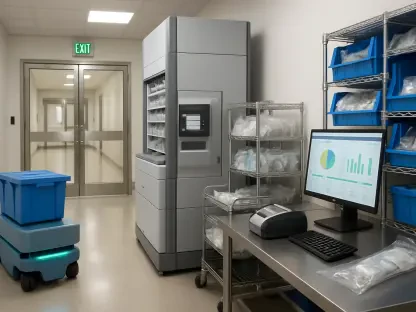Medi-Cal, California’s Medicaid program, serves as an essential lifeline for over one-third of the state’s population. This comprehensive health care program provides free or low-cost services to low-income individuals, including children, seniors, people with disabilities, and pregnant individuals. Despite its critical role in maintaining public health and economic stability, Medi-Cal faces looming challenges from potential federal Medicaid cuts and the introduction of work requirements for beneficiaries. These proposed changes could undermine the program’s ability to provide necessary medical services and jeopardize the well-being of millions of Californians.
The Foundation of Medi-Cal
Eligibility for Medi-Cal
Medi-Cal eligibility is categorized into two types: Modified Adjusted Gross Income (MAGI) Medi-Cal and non-MAGI Medi-Cal. MAGI Medi-Cal bases its qualifications on income relative to the federal poverty level (FPL). Adults with incomes up to 138% of the FPL, pregnant individuals up to 213% of the FPL, and children in families with incomes up to 266% of the FPL are all eligible for this type of coverage. Additionally, certain counties with higher costs of living, like San Francisco, have even higher income eligibility thresholds. Non-MAGI Medi-Cal, on the other hand, is designated for individuals meeting specific criteria such as being blind, disabled, aged 65 or older, or receiving Supplemental Security Income (SSI). Furthermore, former foster youths qualify for coverage until they reach the age of 26, ensuring continuous support during their transition to adulthood.
This dual-structure eligibility system allows Medi-Cal to cater to a diverse range of individuals with varying needs. The program ensures that those most in need, whether due to low income or specific health conditions, can access essential medical services. By balancing income-based and criteria-based eligibility, Medi-Cal covers a substantial portion of California’s population, playing a key role in reducing overall uninsured rates and improving public health outcomes. This robust eligibility framework underpins the inclusivity and comprehensiveness of Medi-Cal, providing a safety net for the state’s most vulnerable residents.
Services Covered by Medi-Cal
Medi-Cal encompasses a wide range of health services, particularly focusing on preventive care to reduce long-term healthcare costs. The program covers routine doctor’s appointments, emergency services, dental care, prescription medications, and other essential medical needs, ensuring comprehensive care for its beneficiaries. Additionally, Medi-Cal includes services such as physical and occupational therapy, vision care, laboratory work, and behavioral health services. This extensive coverage aims to address the diverse health needs of its members, promoting overall well-being and preventing costly medical emergencies through regular preventive care.
Moreover, Medi-Cal offers specialized services tailored to specific populations. For instance, in-home supportive services (IHSS) are available for individuals with disabilities, enabling them to receive care in the comfort of their homes. The program also provides expanded postpartum support for new parents, recognizing the critical importance of maternal and infant health. Beyond physical health services, Medi-Cal includes transportation for medical appointments, removing logistical barriers that might otherwise prevent individuals from accessing necessary care. This comprehensive array of services underscores Medi-Cal’s commitment to fostering a healthier population by providing accessible, high-quality care to those in need.
Financial Structure and Funding
Funding of Medi-Cal
Funding for Medi-Cal involves a collaborative effort between federal, state, and local governments. The Federal Medical Assistance Percentage (FMAP) significantly influences the amount of federal contributions, which typically cover at least 50% of the program’s standard costs. However, this percentage can be higher for certain populations, such as children covered under the Children’s Health Insurance Program (CHIP) and adults included through the Medicaid expansion under the Affordable Care Act (ACA). Additionally, local governments contribute to Medi-Cal funding, alongside revenues from provider taxes and health plan fees. Proposition 56, an initiative that increased tobacco taxes to support provider payments, has also been instrumental in sustaining Medi-Cal’s financial base, though the revenues from such sources have been dwindling, complicating the sustainability of funding.
This complex and multi-source funding structure is integral to maintaining Medi-Cal’s operations and ability to cover a broad spectrum of services for its members. However, the reliance on various funding sources presents challenges, especially when revenues fluctuate or policy changes threaten federal contributions. Ensuring a stable and adequate funding stream is crucial for Medi-Cal’s continued success in delivering essential health services to millions of Californians. Policymakers must navigate these financial intricacies to safeguard the program’s stability and effectiveness, addressing potential shortfalls and exploring innovative solutions to secure sustainable funding.
Delivery Mechanisms of Medi-Cal Care
Medi-Cal primarily delivers care through managed care plans (MCPs) and a fee-for-service (FFS) model. Managed care plans, which serve 88% of Medi-Cal members, involve state-contracted health plans that receive fixed monthly payments to provide and coordinate care. These plans aim to enhance health outcomes, improve care coordination, and control costs by ensuring that members receive comprehensive and continuous care. The remaining 12% of members use the fee-for-service model, allowing them to access any provider accepting Medi-Cal, with providers reimbursed per service delivered. California’s strategic initiatives, such as CalAIM (California Advancing and Innovating Medi-Cal), seek to transition more services to managed care to integrate physical health, behavioral health, and social services, particularly for high-need populations.
The shift towards managed care intends to provide a more cohesive and cost-effective approach to healthcare delivery for Medi-Cal beneficiaries. By fostering better coordination among various healthcare providers and services, managed care can address complex health needs more efficiently and reduce unnecessary hospitalizations and emergency room visits. However, the fee-for-service model remains essential for its flexibility and accessibility, particularly in regions with fewer managed care options. Balancing these delivery mechanisms is critical to ensuring that Medi-Cal members receive timely, high-quality care that meets their unique needs, while also optimizing resource allocation and cost control within the program.
Current Threats to Medi-Cal
Potential Impact of Medicaid Cuts
Proposals for federal Medicaid cuts pose significant risks to Medi-Cal and its ability to deliver vital services. Congressional Republicans have suggested reducing Medicaid funding to finance tax breaks for the wealthy, which could result in budget shortfalls for California’s Medicaid program. Such cuts could compel the state to make difficult decisions, such as reducing benefits, lowering payments to providers, or restricting eligibility criteria. With potential funding losses nearing or exceeding $10 billion annually, California would struggle to replace this shortfall with existing state resources, threatening the coverage and care of over one-third of the state’s residents who depend on Medi-Cal.
These potential federal funding cuts would have the most severe impacts on low-income residents, communities of color, seniors, individuals with disabilities, and children. Reduced benefits and lower provider payments could exacerbate existing health disparities and limit access to necessary care, leading to poorer health outcomes and increased long-term healthcare costs for the state. Policymakers must advocate for the preservation of federal Medicaid funding to ensure that Medi-Cal can continue to provide essential health services and support the well-being of California’s most vulnerable populations. Failing to do so could undermine the program’s effectiveness and widen health inequities across the state.
Impact of Work Requirements on Medi-Cal Members
Imposing work requirements on Medi-Cal beneficiaries could disrupt health coverage for millions of Californians. These policies would require Medicaid recipients to prove they are working, seeking employment, or participating in job training programs to maintain their coverage. However, work requirements are often deemed burdensome and counterproductive, as most Medicaid enrollees under 65 are either employed or unable to work due to caregiving responsibilities, illness, disability, or education. Empirical evidence indicates that work requirements do not effectively increase employment rates but instead create bureaucratic obstacles that result in coverage loss and decreased access to healthcare.
If work requirements were implemented, over 8 million Californians could be at risk of losing their Medi-Cal coverage. This would have significant detrimental effects on the health outcomes and well-being of those affected, including broader social and economic ramifications. As coverage gaps increase, individuals may delay or forgo necessary medical care, leading to worse health outcomes and higher healthcare costs in the long run. Policymakers must carefully consider the implications of introducing work requirements and prioritize policies that support continuous access to healthcare for all Californians, particularly those facing barriers to employment through no fault of their own.
Broader Implications
Impact on Access and Quality of Care
Medi-Cal’s reimbursement rates, generally lower than those for Medicare and private insurance, significantly affect provider participation in the program. Adequate provider participation is essential to ensure comprehensive access to diverse health services, particularly in historically underserved areas. Low reimbursement rates often deter healthcare providers from accepting Medi-Cal patients, resulting in limited availability of services and longer wait times for appointments. Efforts like increased funding from Proposition 56 have aimed to boost provider payments, but the decline in revenue from such sources presents ongoing challenges for maintaining adequate provider networks.
Ensuring fair and competitive reimbursement rates is crucial for attracting and retaining providers within the Medi-Cal program. Without sufficient provider participation, beneficiaries—especially those in rural or low-income urban areas—may struggle to access timely and appropriate medical care. Addressing these reimbursement issues requires a multifaceted approach, including advocacy for higher federal contributions, exploring alternative funding mechanisms, and innovative payment models that incentivize provider participation. By tackling these challenges, California can enhance access to care and improve the overall quality of services available to Medi-Cal members, fostering better health outcomes and greater health equity across the state.
Special Programs and High-Need Populations
California’s strategic initiatives like CalAIM aim to integrate services for high-need populations, including those experiencing homelessness or involved in the criminal justice system. CalAIM focuses on creating a more coordinated and comprehensive approach to healthcare delivery by integrating physical health, behavioral health, and social services. This initiative is particularly crucial for addressing the complex needs of vulnerable groups, who often face multiple barriers to accessing care and achieving stable health outcomes. By providing tailored services and support, CalAIM seeks to improve health outcomes and care coordination for these populations, ultimately reducing long-term healthcare costs and enhancing overall community health.
High-need populations, such as individuals with chronic conditions, those experiencing homelessness, and those re-entering society from the criminal justice system, require specialized care and support to address their unique challenges. CalAIM’s emphasis on whole-person care and social determinants of health aims to address these needs more effectively, fostering better health and social outcomes. By integrating services and focusing on prevention and early intervention, California can enhance the well-being of its most vulnerable residents, reduce health disparities, and promote greater health equity. These efforts underscore the importance of maintaining and strengthening Medi-Cal to ensure that all Californians, regardless of their circumstances, have access to the comprehensive care they need.
Economic and Social Ramifications
Health Disparities and Long-term Costs
Federal funding cuts and the introduction of work requirements could exacerbate health inequities and increase long-term healthcare costs for the state. If Medi-Cal’s funding is reduced, the state may have to make difficult choices that could disproportionately impact low-income residents, communities of color, seniors, individuals with disabilities, and children. Reduced benefits, lower provider payments, and restricted eligibility could limit access to essential care, widening existing health disparities and leading to poorer health outcomes for the most vulnerable populations. Ensuring sufficient funding and provider participation is vital for maintaining the program’s effectiveness and reach, preventing costly medical emergencies and long-term health issues.
Addressing potential threats to Medi-Cal requires a comprehensive approach that prioritizes the health and well-being of all Californians. Policymakers must advocate for continued federal support and explore innovative solutions to secure sustainable funding. Additionally, efforts to improve reimbursement rates and enhance provider participation are crucial for ensuring that Medi-Cal beneficiaries have access to high-quality, timely care. By addressing these challenges, California can promote greater health equity, reduce long-term healthcare costs, and ensure the continued success and sustainability of the Medi-Cal program.
The Critical Role of Medi-Cal in California’s Future
Medi-Cal, California’s Medicaid program, is a vital support system for over one-third of the state’s residents. This extensive health care initiative offers free or low-cost services to low-income individuals, including children, elderly people, those with disabilities, and pregnant women. Medi-Cal plays a crucial role in preserving public health and contributing to economic stability across California. However, the program is currently facing significant threats due to potential federal Medicaid cuts and the possible introduction of work requirements for beneficiaries. These proposed changes could severely impair Medi-Cal’s capacity to deliver essential medical services, putting the health and well-being of millions of Californians at risk. In the face of these challenges, it’s imperative to recognize and safeguard the indispensable role Medi-Cal plays in the lives of so many, ensuring the program continues to function effectively and support those in need.









